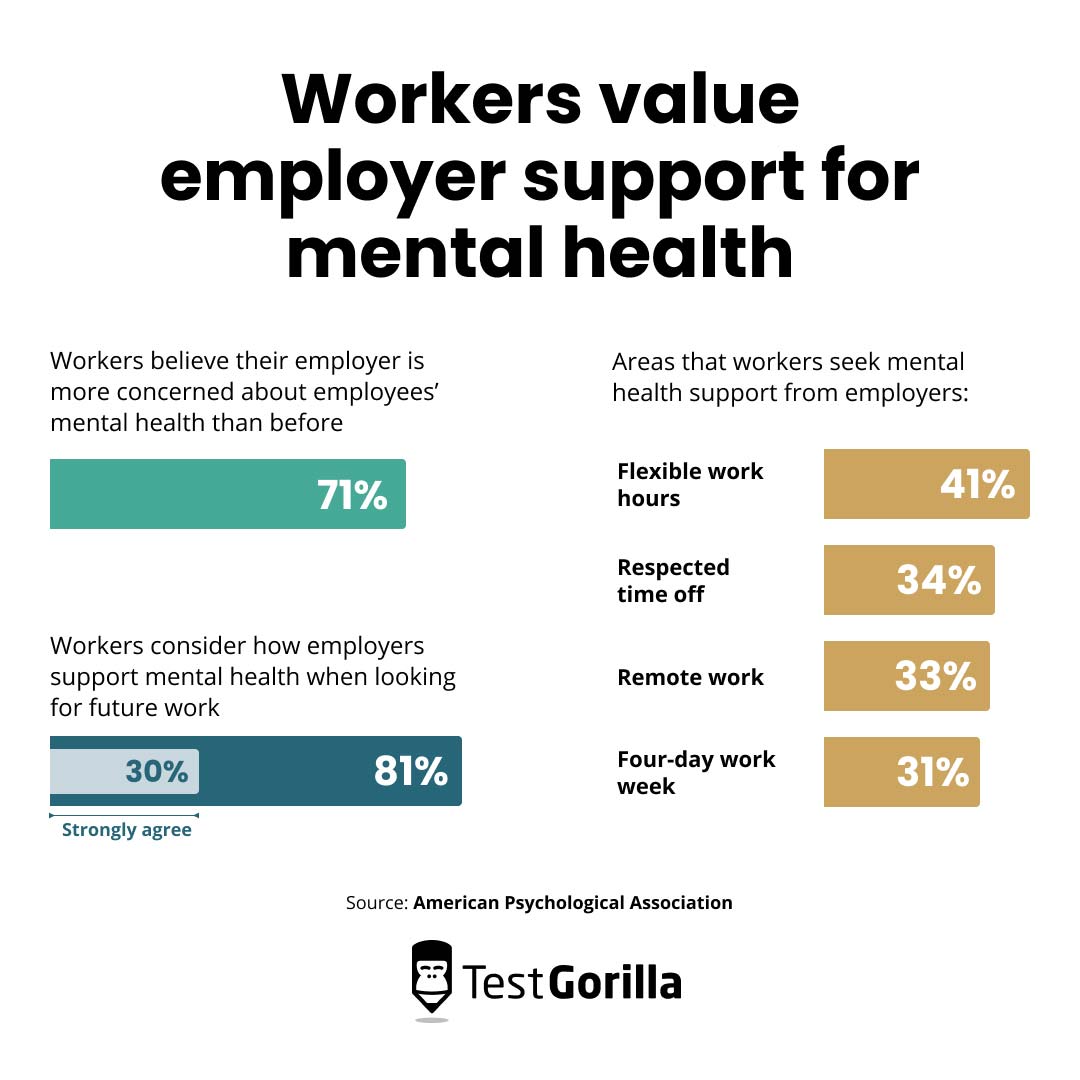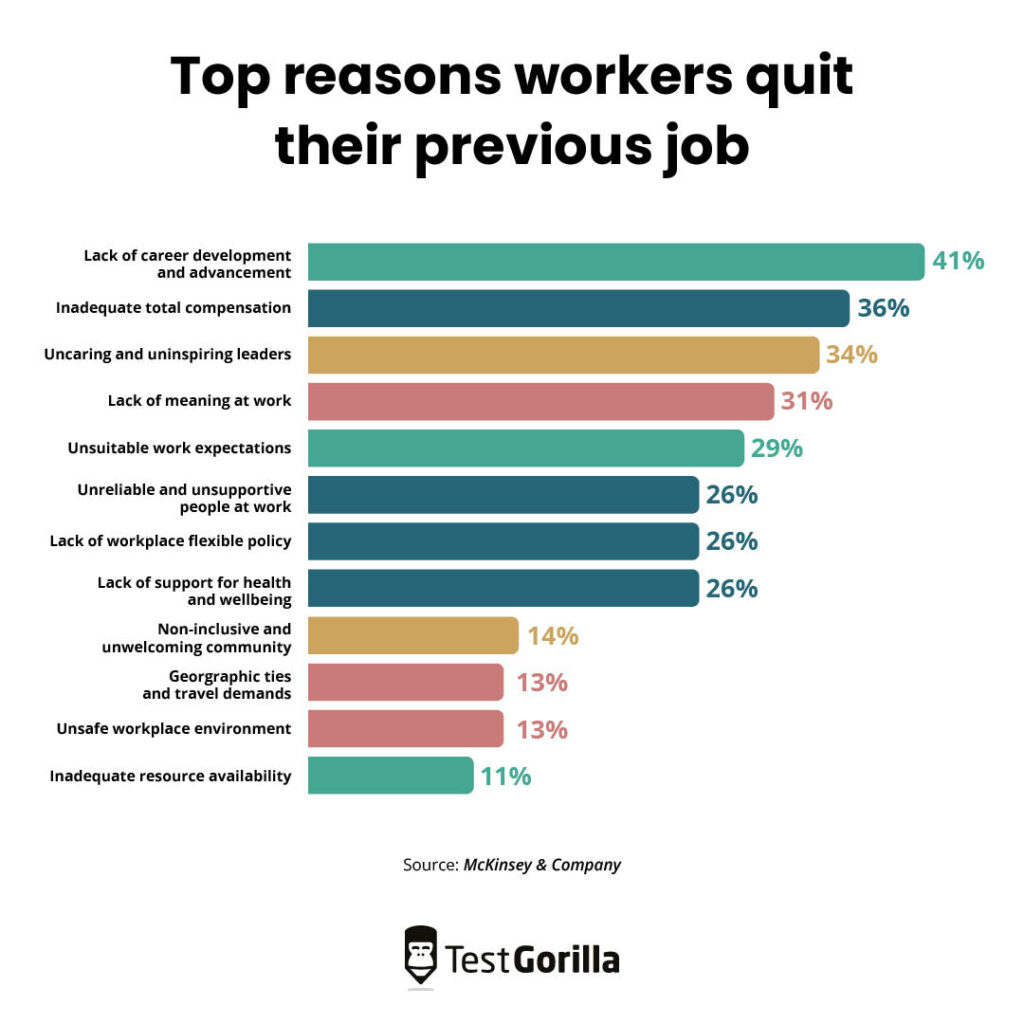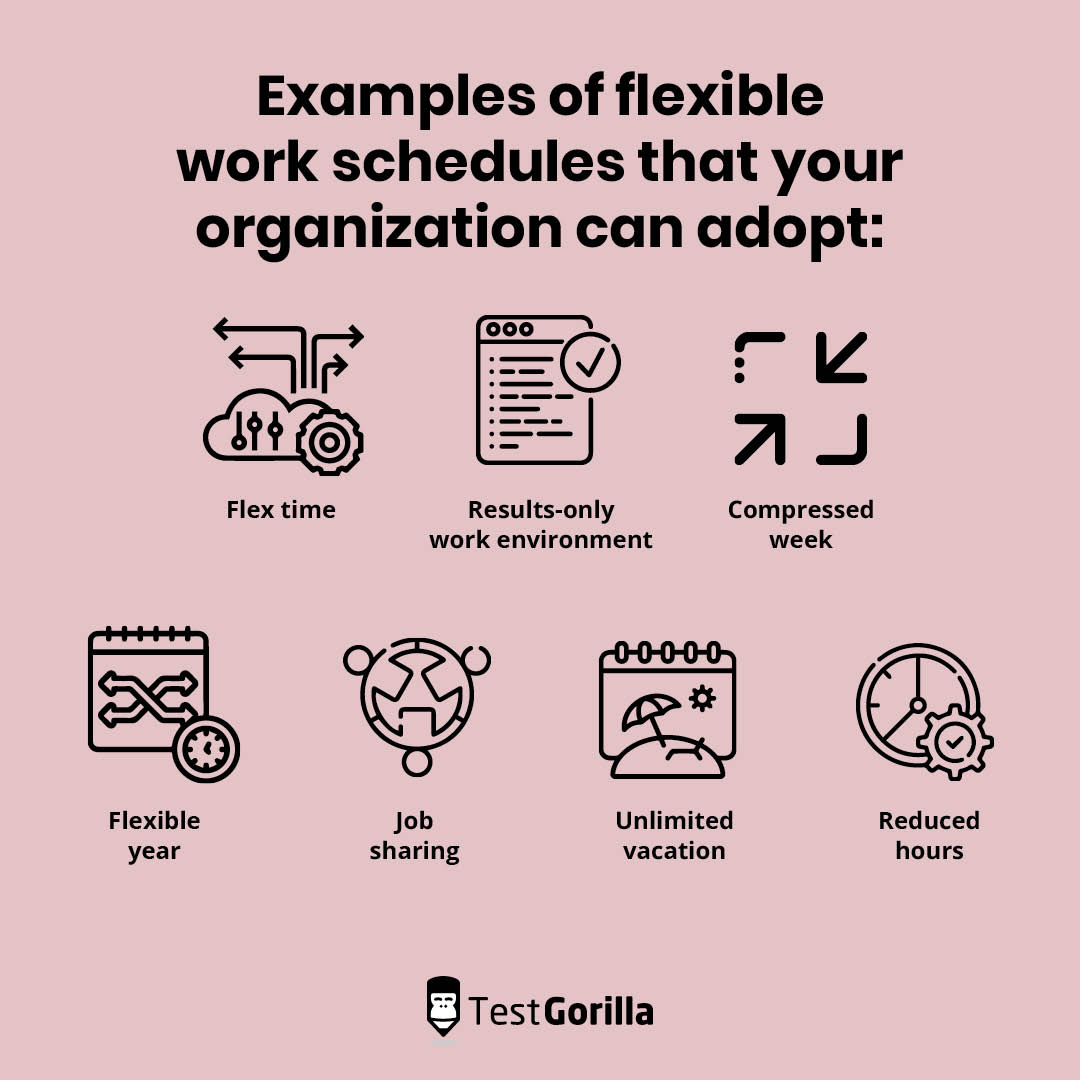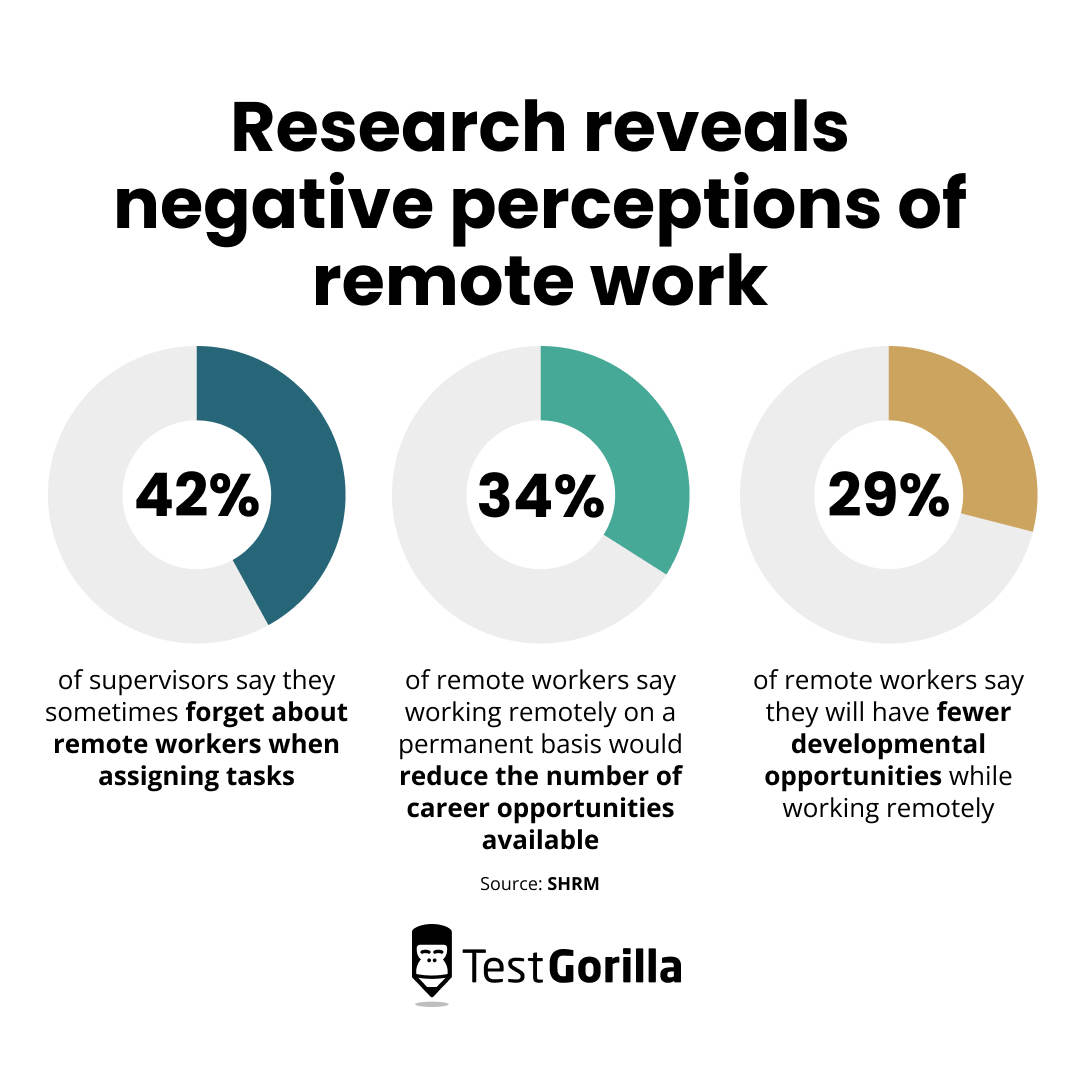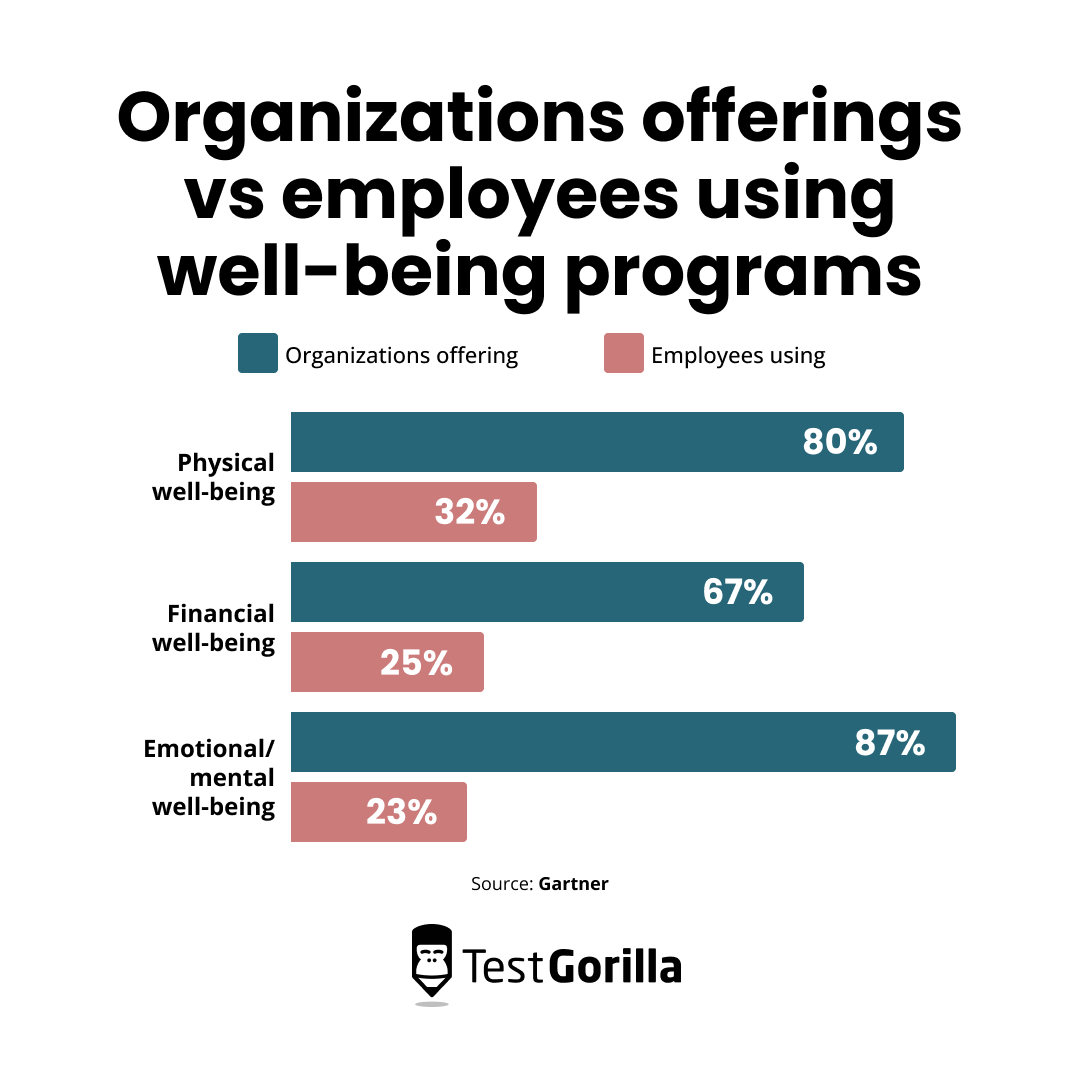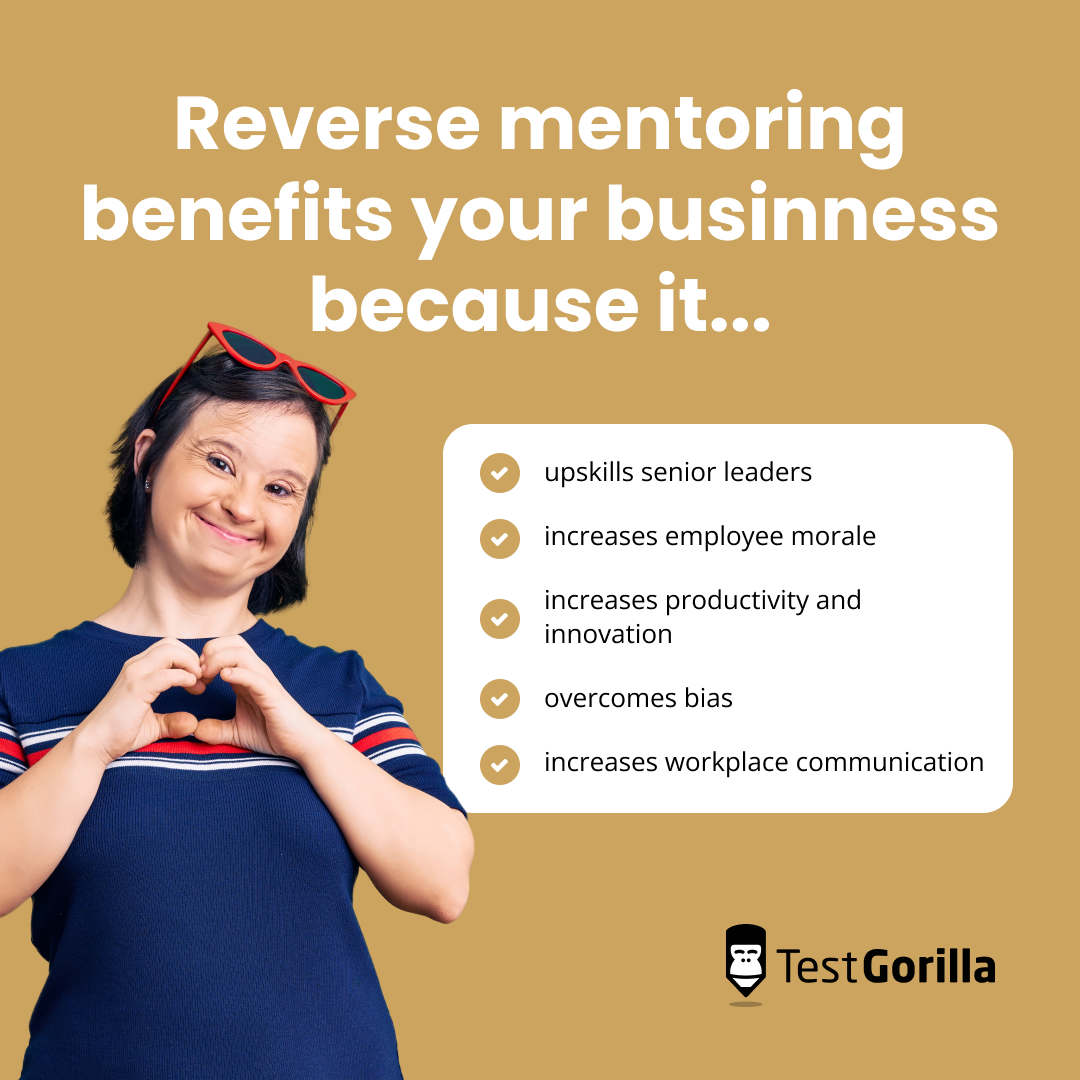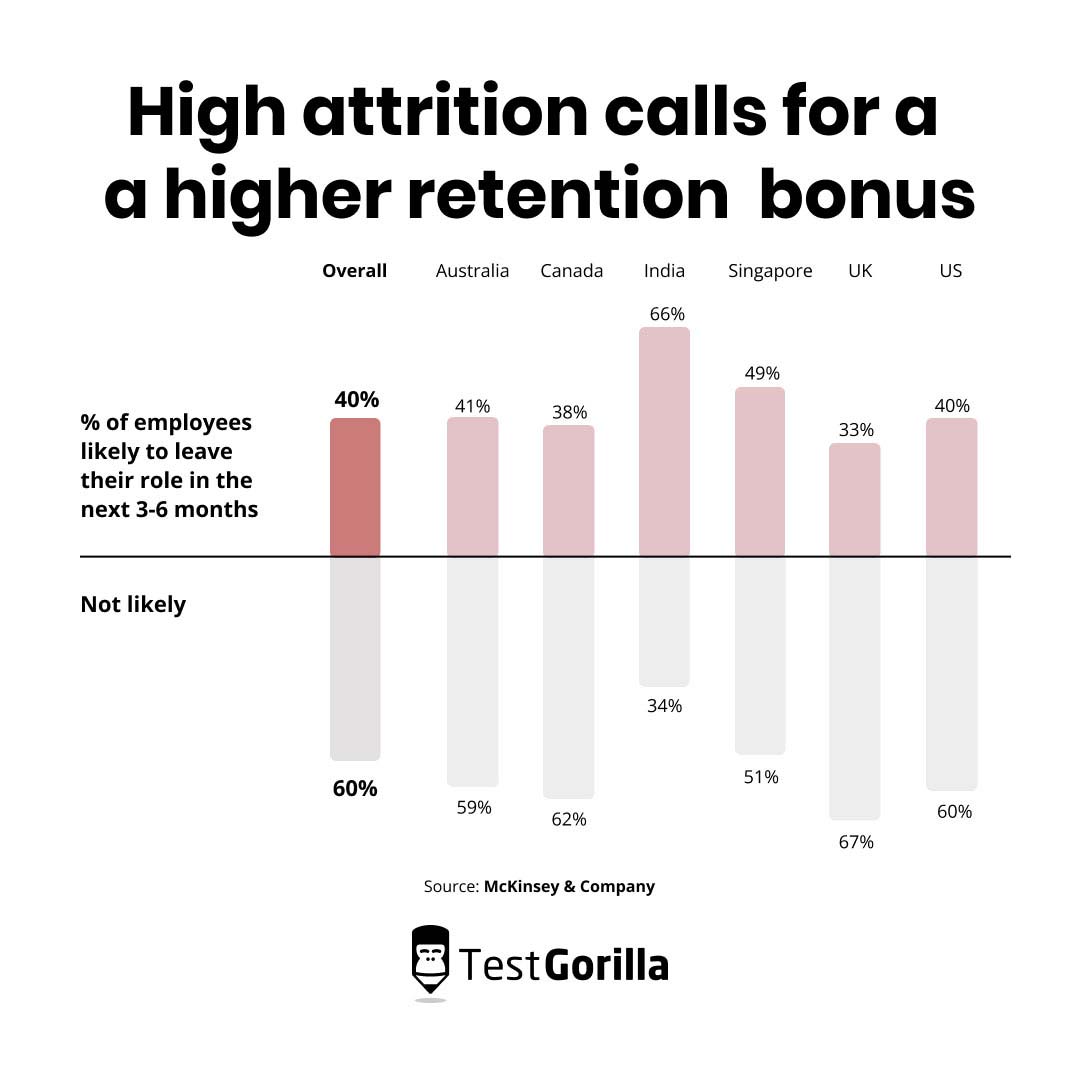The ultimate guide to employee retention trends: 11 talent retention trends to minimize turnover
Workforce trends play a big role in your employee turnover rate. Employees often make gut decisions about leaving and may be attracted by what other companies are offering.
For example, an older employee might move to a company that offers a phased retirement plan, enabling them to ease into retirement over a five-year period instead of abruptly stopping work in two years.
Likewise, younger workers may be more motivated by flexible working options and jump ship for a company that offers remote working.
This makes it necessary for leaders to stay on top of what’s happening in the wider workforce and take the lead on implementing innovative employee retention strategies – or risk being left behind.
In this blog, we outline 11 of the top employee retention trends, including key employee retention stats and ideas for how to implement them.
11 talent retention trends you need to consider to minimize turnover
You might be familiar with the talent acquisition trends sweeping the workforce, but what are the best talent retention trends right now?
We’ve rounded up 11 trends we think should be on your radar, plus employee retention statistics to back them up.
11 talent retention trends to minimize turnover: Summary table
Struggling with attrition and need to know how to boost retention, fast? Here’s a short summary.
Turnover and retention trends | Example actions |
1. Managing your corporate reputation | Use skills-based hiring to build a reputation for fairness and data-driven decision-making |
2. Implementing employee wellbeing initiatives | Build the seven areas of employee wellbeing: health, good work, values, social life, personal growth, good lifestyle choices, and financial wellbeing |
3. Providing employee mental health support | Offer counseling sessions and peer-to-peer support groups for mental health |
4. Facilitating employee work-life balance | Give generous parental leave |
5. Embracing flexible work | Allow employees to set their own schedules as long as they work in the office one or more days a week |
6. Writing up a formal remote work policy | Set guidelines for employees about out-of-hours work to tackle presenteeism |
7. Testing out job rotation | Use skills tests to track rotational program participants’ skill development |
8. Building an employee listening strategy | Use an “always on” feedback tool to assess your employee wellbeing programs |
9. Employing upward feedback | Institute a reverse mentoring program |
10. Identifying “flight risk” employees for support | Use employee listening to spot and support flight-risk employees |
11. Offering phased retirement | Use skills tests to sharpen retiring employees’ training so they see out their phased retirement plan |
1. Managing your corporate reputation
The first employee retention trend to consider is defining and managing your corporate reputation.
Your corporate reputation refers to how your organization is viewed by its stakeholders. That includes:
Owners, shareholders, and investors
Employees
Vendors and business partners
Clients and customers
The general public
It’s not just about the quality of your product or service but also closely related to your corporate purpose. In other words, the mission that your work serves.
Culture issues have been proven to have a direct link to quitting.
One study by MIT Sloan School of Management found that a toxic corporate culture is the biggest driver of attrition in organizations, more than 10 times as powerful as compensation issues.[1]
To leverage this employee retention trend, outline a clear mission for your organization and encourage leadership communication on this topic with all employees.
Instruct your leaders to role model your core values, like in their leadership style.
Alex Turnbull, chief executive officer at Groove HQ, a small business management platform, wanted to break down the culture of silos in his business. He led the way by organizing one-on-one meetings with his employees throughout the organization, role modeling honest communication.
The openness he encouraged in these meetings soon expanded to other forms of company communication, like Slack.[2]
You also need to carry this strategy into your broader decision-making. Although 82% of employees agree corporate purpose matters, only 42% believe it drives their leaders’ choices.
Start by implementing a skills-based approach to hiring. This can contribute to a corporate reputation for equality of opportunity and data-driven decision-making, counteracting the “grass is greener” effect when employees consider jumping ship.
It works: Skills-based organizations have been found to be almost twice as likely to retain high performers and more than twice as likely to innovate compared to their non-skills-based counterparts.[3]
2. Prioritizing employee wellbeing
As you work on your corporate reputation, incorporate a commitment to employee wellbeing.
For too many workers, their jobs are a detriment to their health and happiness. More than 80% of workers in the US suffer from work-related stress, with a quarter naming their job as the number-one stressor in their lives.[4]
Demonstrating care for and investment in employee wellbeing can increase employee engagement, job satisfaction, and loyalty.
To do this, you need to nurture the seven factors of employee wellbeing as laid out by the Chartered Institute of Personnel and Development:
Health: Employees are in physical and mental good health, with adequate healthcare and safe working conditions
Good work: Employees are invested in the work they do and how it’s conducted
Values: Employees feel that their work is valuable and their role is important
Social life: Employees feel connected to each other and their leaders
Personal growth: Employees are able to grow and progress professionally
Good lifestyle choices: Employees are able to make healthy choices, like maintaining a regular sleep schedule
Financial wellbeing: Employees have financial stability, including the ability to save for retirement
Offering comprehensive healthcare packages and retirement plans are important, but skills-based hiring methods can help you support employee wellbeing, too.
Directly testing the skills candidates need for roles increases the likelihood that they will perform well and feel confident in their work, and testing their personality and cultural values helps match them to team members they’ll connect with.
Business travel management firm TruTrip employed this strategy to improve employee experience.
“Our new hires appear to be a better fit,” the company reports. “They become great contributors more quickly and, importantly, they appear to have a better initial experience with us.”
Skills-based hiring also goes hand in hand with employee development, helping you facilitate employees’ personal and career growth.
And it works: According to our State of Skills-Based Hiring report, 91% of organizations improved employee retention when hiring for skills.
3. Providing employee mental health support
Employee wellbeing encompasses all aspects of an employee’s health, but more and more employers are paying specific attention to mental health: 81% have increased their focus on the issue since 2020.[5]
This is sorely needed, and employee retention statistics prove it. Nearly one in seven people experience mental health issues in the workplace.[6]
Additionally, a study by the American Psychological Association (APA) found that more than 80% of workers consider mental health support an important consideration when choosing an employer.[7]
So, how can you improve mental health in the workplace?
Offering wellness programs and benefits, especially ones that support mental health, is a good place to start. Studies show that they make employees 1.6 times more likely to stay with an employer.[8]
Access to mental healthcare is important, as are peer-to-peer support networks like mental health first aiders. Ideally, you should offer a combination of both.
Ernst & Young’s “Better You” program is a strong example. Through this program, EY employees receive up to 25 counseling sessions for themselves and their family members, in addition to training in mindfulness and meditation.
The company also covers the cost of online stress management tools and training for employees to recognize signs that their colleagues are struggling.[9]
As the APA’s research shows, many of the supportive structures workers are asking for relate to work-life balance, which brings us to our next employee retention trend.
4. Facilitating employee work-life balance
Maintaining a healthy work-life balance is notoriously difficult for workers: One in 10 American employees work more than 50 hours per week.
Fortunately, employers are making employee work life balance a higher priority. A massive 78% of executives say that if their company can’t maintain employee wellbeing to an acceptable standard, the organization’s leadership should change.[10]
Many are even reframing the issue completely from “work life balance” to “life work balance”: The idea that life should come first and work second.
One of the most effective ways you can improve life-work balance in the workplace is by ensuring all your teams are adequately staffed and have the skills needed for their roles.
With three-quarters of companies reporting talent shortages – a 16-year high – employees are stretched thin trying to compensate for skills gaps.[11]
This contributes to employee burnout on many teams. Indeed, McKinsey research shows that nearly a third of workers quit because of unsustainable work expectations.[12]
To ensure your teams have the staff and skills they need, conduct a skills gap analysis using skills tests. You can use this to identify and fix skills gaps, either with training or by hiring new personnel.
Pair this with other ways to improve work life balance for your employees, for example:
Giving longtime employees sabbaticals to travel or pursue their passions
Establishing meeting-free days for all employees
Planning company-wide days off
Offering more generous paid time off
BrewDog, a multinational brewery, employs this strategy. All BrewDog employees qualify for a fully paid, month-long sabbatical every five years. The company also offers enhanced parental leave and even “paw-rental leave” to allow employees to settle in new pets.[13]
5. Embracing flexible work
Offering flexible work arrangements is a great option for giving employees more autonomy and freedom to fit their work around their other responsibilities.
One UK study found that more than three-quarters of home and hybrid workers reported improved work-life balance compared to compulsory office work, and research by IWG found that nearly two-thirds of HR leaders believe hybrid work increases retention.[14]
There are many ways to implement a flexible working policy, including:
Flex time
Results-only work environment
A compressed or four-day work week
Flexible year
Job sharing
Unlimited vacation
Reduced hours
You can even combine multiple strategies. If your organization is one where remote work is possible, you might institute a hybrid work model with a flex time format, where employees can choose their own schedules within certain parameters.
At Uber, for example, employees can set their own schedules as long as they spend half their time in the office. This could mean three days per week in-office; it could also mean one week in person and one week remote.[15]
6. Writing up a formal remote work policy
If you do decide to adopt remote working in any form, you need a solid remote work policy in place to avoid obstacles.
For example, negative assumptions about the level of effort required for remote work often leads employees to overcompensate with “presenteeism”: feeling obligated to be constantly available while working from home to “prove” they’re working.
More than three-quarters of HR professionals in 2021 said that they had seen presenteeism in remote employees.[16]
The isolation that comes with full-time remote work can take a mental toll, leading to working from home depression. A hybrid workplace can also have negative consequences for remote employees’ professional development opportunities:
42% of supervisors say they sometimes forget about remote workers
34% of remote workers say remote work reduces the number of available career opportunities
29% of remote workers say it limits their chances for development[17]
Your remote work policy can tackle these issues by codifying key remote work best practices like:
Defining your remote hiring and onboarding processes, using skills tests to identify those with the necessary remote working skills
Instructing managers on how and when to check in with remote employees
Setting boundaries for remote employees, like instructing them not to send emails or Slack messages after hours
Investing in remote employees’ work environment – for instance, by purchasing office equipment for them
This example from Vanderbloemen is a good one. The policy outlines key information like who’s eligible for remote work, what clearance they need from management, and what software is required to facilitate it.
Without putting these boundaries in place, you might struggle to secure the benefits remote work promises for your employee retention rate.
7. Testing out job rotation
To facilitate employees’ personal growth and connection to the organization’s overall mission, consider job rotation programs.
Also known as rotational programs, job rotation schemes move employees around between different roles in an organization. Each rotation is usually for a set period of time and within the same level of the company, mainly entry-level roles.
Companies with job rotation programs include:
H-E-B
Allstate
Caterpillar
Cigna
Mastercard
Lockheed Martin[18]
Job rotation programs help employees gain new skills and a sense of achievement in their roles, both of which can positively affect retention.
One study found that 90% of employees felt job rotation fulfilled their skill development needs, 96% of participants improved their productivity, and 90% improved their problem-solving.[19]
Rotational programs may also help employees gain a better understanding of how different roles contribute toward the organization’s overall purpose, creating a stronger sense of loyalty and connection.
To supercharge job rotation programs, use regular skills testing to track skill development and spot candidates for promotion or advancement in each function.
8. Building an employee listening strategy
Employee listening is central to any effort to boost employee retention and reduce the effect of employee turnover trends. This is the practice of collecting regular feedback from employees to respond to their needs and choose the right talent retention trends to follow.
For example, many organizations offer wellbeing programs that their employees don’t use.[20]
This comes at a cost to the company and may make employees feel that their employer doesn’t give them the support they need. Employee listening can help you identify the most impactful programs to invest in.
One way to listen to employee voice is through an “always on” feedback tool. Most HR leaders say this is essential to any listening program, but only 20% have one in place.
TotallyMoney, a fintech company, used an employee listening tool to learn how it could improve retention, identifying employee development and interdepartmental communication as issues.
As a result, leaders restructured the data team to make employee development easier. TotallyMoney also improved communication by inviting staff at all levels to speak at weekly breakfast meetings. Turnover fell dramatically: from 64% to 23%.[21]
9. Employing upward feedback
One up-and-coming employee retention trend is to take employee listening to the next level with upward feedback.
Employee listening is a general practice that requires listening to employees’ feedback on all areas of business.
Upward feedback is more focused on leadership, with employees giving managers and higher-level executives their perspective on their management style and performance.
This is valuable – in one survey, more than 80% of respondents identified poorly trained managers as a cause of unnecessary stress, and this can damage employee experience.[22]
Upward feedback is also a powerful demonstration of psychological safety in a workplace. It shows employees that they can voice constructive criticism directly to management without fear of repercussions.
One way to implement upward feedback is through reverse mentoring. This is when senior leaders are paired with junior employees to hear their perspective of the organization and receive their feedback on how it’s run.
Pairing a leader with a junior member of staff who belongs to a marginalized group can have the added benefit of helping them break down the barriers to diverse leadership that exist within their own organization.
In fact, Heineken uses reverse mentoring as a direct tactic to break down age and gender stigma in the beer industry.[23]
10. Identifying “flight risk” employees for support
It’s not always easy to identify an employee’s flight risk. Most people do not share their plans to quit with employers ahead of time, and it may not be obvious from their behavior or performance that they’re considering a change.
However, there are likely already some flight-risk employees in your company: 40% of workers globally say they might leave their jobs in the next 6 months.[12]
If you’re paying attention to many of the employee retention trends we’ve already listed, you have a good chance of spotting an employee flight risk – and giving them the support they need to convince them to stay.
Here are how some of the employee retention trends we’ve outlined can counteract primary reasons employees have for quitting.
Reason for quitting | Employee retention trend that could help |
Uncaring or uninspiring leadership | - Managing your corporate reputation to create a stronger connection to the company's mission - Upward feedback to improve management styles |
A big life change, e.g. a partner’s relocation | - Embracing flexible work to manage the transition and enable succession planning - Instituting a remote working policy so they can stay in their role |
Lack of work-life balance | - Offering wellbeing initiatives like discounted gym memberships to enable healthy lifestyle choices - Making these choices more accessible with flexible working |
11. Offering phased retirement
Finally, as many countries deal with aging populations, the retirement age is creeping higher. The result is that increasing numbers of organizations are considering phased retirement plans for their employees.
This is when employees who are approaching or at retirement age gradually scale back their working hours in the lead-up to full retirement.
This policy is already in place at the University of California at Santa Cruz, where employees can enroll when they are aged 55 and over, are on the university’s retirement plan, and have at least five years of retirement service credits behind them.[24]
There are benefits for both sides:
Benefits of phased retirement for employees | Benefits of phased retirement for employers |
- Reduces the suddenness of the transition into retirement - Enables them to keep working and adding to their pension while still reducing their hours | - Makes succession planning and handover easier - May enhance productivity by aiding work-life balance - Reduces or delays the costs of hiring and training new employees |
Seems like a win-win situation, right?
However, studies show that older workers encounter major obstacles that prevent them from using these programs, including issues with management and age discrimination.[25]
To smooth the transition to phased retirement, include all generations in your diversity and inclusion strategy.
Use skills tests to include older employees in opportunities for upskilling and reskilling, targeting their weaker skill areas for training to keep them up to speed with their peers.
These measures increase the likelihood that phased retirement workers serve out their full term because workers who feel highly included are almost three times more likely than their peers to feel committed to their employer.[26]
Leverage employee retention trends using skills testing
Employee retention trends are likely to fluctuate with the job market as new technologies and economic developments influence the workforce.
What isn’t changing, however, is the need for HR professionals to take a metric-driven approach to managing employee retention, and that’s where skills tests come in.
Skills assessments can help you develop a corporate reputation for equality of opportunity and support initiatives like employee wellbeing, remote work, and job rotation, plus many more.
To discover more about how skills assessments can reduce high turnover rates in your workforce, read our guide to employee retention strategies.
Retention starts with recruitment – read up on our top talent acquisition strategies to make long-term hires.
To ensure your next hire is in it for the long haul, use our Culture Add test to find the perfect addition to your team.
Sources
1. Sull, Donald; Sull, Charles; Zweig, Ben. (January 11, 2022). “Toxic Culture Is Driving the Great Resignation”. MIT Sloan Management Review. Retrieved October 21, 2023. https://sloanreview.mit.edu/article/toxic-culture-is-driving-the-great-resignation/
2. Turnbull, Alex. “How Regular One-on-One Meetings Saved Our Company Culture”. Groove HQ. Retrieved October 21, 2023. https://www.groovehq.com/blog/one-on-one-meetings-for-company-culture
3. Cantrell, Sue, et al. (September 08, 2022). “The skills-based organization: A new operating model for work and the workforce”. Deloitte Insights. Retrieved October 21. 2023. https://www2.deloitte.com/us/en/insights/topics/talent/organizational-skill-based-hiring.html
4. “Workplace Stress”. The American Institute of Stress. Retrieved October 21, 2023. https://www.stress.org/workplace-stress
5. Suff, Rachel. (2022). “Ensuring health and wellbeing remains a business imperative post-pandemic”. CIPD. Retrieved October 21, 2023. https://www.cipd.org/uk/views-and-insights/thought-leadership/cipd-voice/ensuring-health-and-wellbeing-remains-a-business-imperative-post-pandemic/
6. “Mental health at work: statistics”. (2016). Mental Health Foundation. Retrieved October 21, 2023. https://www.mentalhealth.org.uk/explore-mental-health/statistics/mental-health-work-statistics
7. “Workers appreciate and seek mental health support in the workplace”. (2022). American Psychological Association. Retrieved October 21, 2023. https://www.apa.org/pubs/reports/work-well-being/2022-mental-health-support
8. “The Rise of the Whole Employee: 20 Years of Change in Employer-Employee Dynamics”. (2022). MetLife. Retrieved October 21. 2023. https://www.rbgcal.com/wp-content/uploads/2016/03/MetLife-Employee-Benefit-Trends-Study-2022.pdf
9. “Better You”. EY. Retrieved October 21, 2023. https://leplb0790.upoint.ap.alight.com/web/ey/preauth-active#/routing
10. Fisher, Jen, et al. (June 20, 2023). “As workforce well-being dips, leaders ask: What will it take to move the needle?”. Deloitte. Retrieved October 21, 2023. https://www2.deloitte.com/uk/en/insights/topics/talent/workplace-well-being-research.html
11. “The Talent Shortage”. (2022). ManPowerGroup. Retrieved October 21, 2023. https://go.manpowergroup.com/talent-shortage
12. De Smet, Aaron, et al. (July 18, 2022). “The Great Attrition is making hiring harder. Are you searching the right talent pools?”. McKinsey & Company. Retrieved October 21, 2023. https://www.mckinsey.com/capabilities/people-and-organizational-performance/our-insights/the-great-attrition-is-making-hiring-harder-are-you-searching-the-right-talent-pools
13. “Brewdog and the living wage”. (November 26, 2019). Brewdog. Retrieved October 21, 2023. https://www.brewdog.com/blog/brewdog-and-the-living-wage
14. “Is hybrid working here to stay?”. (May 23, 2022). Office for National Statistics. Retrieved October 21, 2023. https://www.ons.gov.uk/employmentandlabourmarket/peopleinwork/employmentandemployeetypes/articles/ishybridworkingheretostay/2022-05-23
15. “Our return to the office”. (October 4, 2022). Uber. Retrieved October 21, 2023. https://www.uber.com/en-DE/blog/our-return-to-the-office/
16. “Health and wellbeing at work 2021”. (2021). CIPD. Retrieved October 21, 2023. https://www.cipd.co.uk/Images/health-wellbeing-work-report-2021_tcm18-93541.pdf
17. “SHRM Research Reveals Negative Perceptions of Remote Work”. (July 26, 2021). Society for Human Resource Management. Retrieved October 21, 2023. https://www.shrm.org/about-shrm/press-room/press-releases/pages/-shrm-research-reveals-negative-perceptions-of-remote-work.aspx
18. Velasquez, Rose. (July 31, 2023). “6 Companies With Rotational Programs”. Builtin. Retrieved October 21, 2023. https://builtin.com/career-development/companies-with-rotational-programs
19. Dhanraj, Dayanath; Parumasur, Sanjana Brijball. (2014). “Perceptions Of The Impact Of Job Rotation On Employees, Productivity, The Organization And On Job Security”. Corporate Ownership & Control. Retrieved October 21, 2023. http://www.virtusinterpress.org/IMG/pdf/10-22495_cocv11i4c7p10.pdf
20. Valencia, Carolina. (October 05, 2021). “How to Get Employees to (Actually) Participate in Well-Being Programs”. Harvard Business Review. Retrieved October 21, 2023. https://hbr.org/2021/10/how-to-get-employees-to-actually-participate-in-well-being-programs
21. “TotallyMoney reduced employee turnover from 64% to 23%”. Workday. Retrieved October 21, 2023. https://www.workday.com/en-gb/customer-stories/q-z/totallymoney-employee-voice-reduced-turnover.html
22. “Survey: 84 Percent of U.S. Workers Blame Bad Managers for Creating Unnecessary Stress”. (August 12, 2020). Society for Human Resource Management. Retrieved October 21, 2023. https://www.shrm.org/about-shrm/press-room/press-releases/pages/survey-84-percent-of-us-workers-blame-bad-managers-for-creating-unnecessary-stress-.aspx
23. Kohler, Lindsay. (January 17, 2023). “Heineken USA CEO Maggie Timoney On Increasing Inclusion In The Alcohol Industry”. Forbes. Retrieved October 21, 2023. https://www.forbes.com/sites/lindsaykohler/2023/01/17/heineken-usa-ceo-maggie-timoney-on-increasing-inclusion-in-the-alcohol-industry/
24. “UC Phased Retirement Program”. UC Santa Cruz. Retrieved October 21, 2023. https://shr.ucsc.edu/employee_programs/phased_retirement/index.html
25. Henkens, Kène; van Dalen, Hendrik P; van Solinge, Hanna. (2021). “The Rhetoric and Reality of Phased Retirement Policies”. Public Policy & Aging Report. Retrieved October 21, 2023. https://academic.oup.com/ppar/article/31/3/78/6333847
26. “Understanding organizational barriers to a more inclusive workplace”. (June 2020). McKinsey & Company. Retrieved October 21, 2023. https://www.mckinsey.com/~/media/McKinsey/Business%20Functions/Organization/Our%20Insights/Understanding%20organizational%20barriers%20to%20a%20more%20inclusive%20workplace/Understanding-organizational-barriers-to-a-more-inclusive-workplace.pdf
The best insights on HR and recruitment, delivered to your inbox.
Biweekly updates. No spam. Unsubscribe any time.
Related posts
You've scrolled this far
Why not try TestGorilla for free, and see what happens when you put skills first.




